As in many old regime societies, Bologna presents a diversified and well-articulated healthcare system, where the physician worked together with a myriad of professional figures, including apothecaries and barber-surgeons, as well as a wider spectrum of popular healers such as norcini, charlatans, distillers, wise-women, itinerant sellers, and experts in herbal remedies. At the top of this system stood the College of Physicians, the organ of the medical elite, which ruled the Bolognese healthcare practices through its statutes and the power to confer licenses. The conventions of encomiastic portraiture reflect the ways in which those statutes shaped the physician’s public image: there are indeed documented cases of abuses of the doctoral robe, which in Bologna was black with large sleeves, alla ducale. Among the most prominent physicians of the 17th century, Marcello Malpighi (1628-1694) presented himself – as it emerges from his Autobiography – as both a university professor and an observer of nature. His contribution to microscopic anatomy and, in general, his observational approach to nature were at the core of a dispute that the exhibition documents through the portraits of its main characters.
